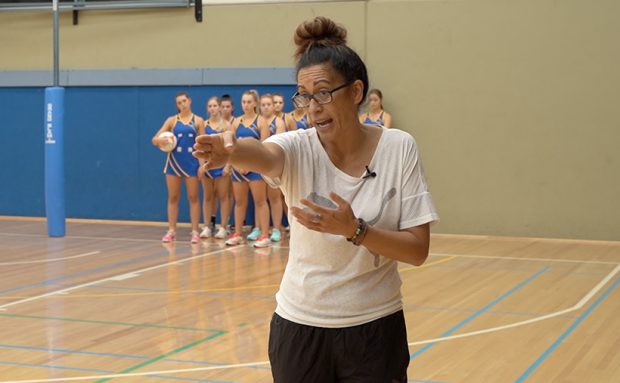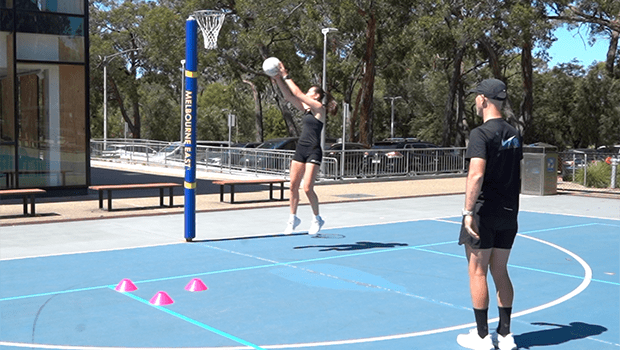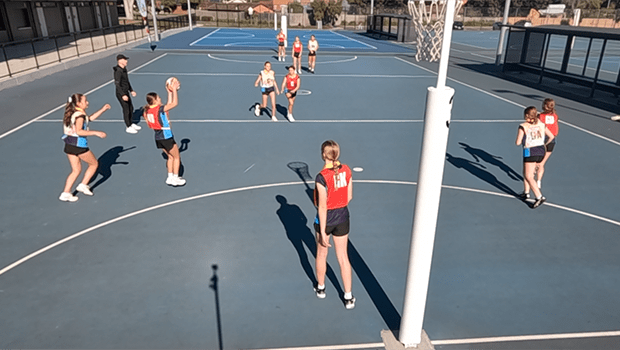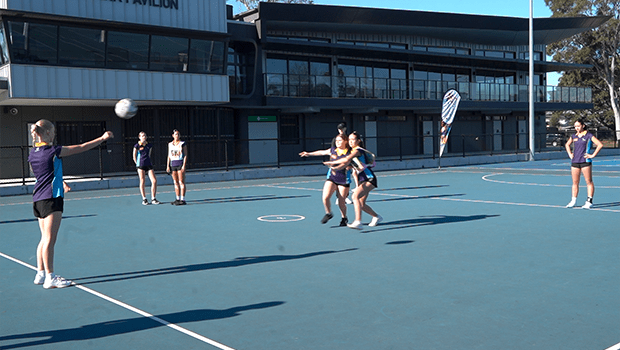In the recent trans Tasman series, Julie Corletto joined the Diamonds’ defensive line to coach some “mongrel” back into a lineup that had lost its scrapping, nagging, contesting and tagging trademark.
It created a lot of talk, none more so than from New Zealand, who implied that meant roughhouse tactics and blamed it for the loss. What the Kiwis didn’t compute was that roughhouse tactics were what the Diamonds had shelved after sitting out of play for most of the previous game against the Kiwis.
The process of cleaning that up was them changing their attitude and mindset, to create a very different style and approach to the defensive game.
VIDEOS: CHECK OUT ALL OF OUR DEFENSIVE DRILLS HERE
Being feisty and hard at the contest has been a trademark of Aussie defence for many decades.
Think Lizzy Ellis storming the full goal third to reel in an unlikely intercept, leaving incidental contacts along the way as she has eyes only for the ball. Think Kath Harby in the 58th minute of a match, still absorbing body hits as she closes out a tag on her GA to nullify the opposition playmakers.
Think Corletto scrapping for a loose ball at the feet of the opposition in a 6-foot-something goal circle. Think Laura Geitz and the one-on-one pressure she puts into the contest for every single high ball that comes near her. What is exciting is the legacy these players have left, paving the way for this style of defence to live on through current day players such a Sharni Layton and Courtney Bruce.
So what can we all do back at grassroots level to spot and keep this feisty legacy kicking?
1. Train feisty
Unfortunately the skills of scrapping, nagging and tagging aren’t in the textbook. As a coach, ask your players to train with match intensity. Get to loose balls like your life depended on it! Tag your opposing player so every possession is earned. Train soft and you’ll play soft.
2. Stop writing off feisty qualities
I have lost count of the times I have heard selectors write off a player who once showed too much aggression or was a bit rough around the edges. Whilst they put these players into the “too hard” basket, they idolise the gazelles – the lovely players who tick all of the boxes, but in reality lack the guts. For me, not picking someone because of attitude is a self-admission that you’re not equipped as a coach to change that!
3. Feisty attacking
This is the unusual species of player who is an attacker but can defend with grit and guts! All too often we see star jumping shooters and dawdling wing attacks use transition defence as a chance to chill. Next time you have a specialist defensive session, invite the attackers. If each player can bag a few turnovers, your scoreboard is going to be ticking over much quicker.
4. Feisty in packs
One thing the world’s all-conquering defensive combos have had in common across the decades is the contrast pairings. Ellis was an aerialist hunter, Harby was a ground working hustler. Geva Mentor and Karla Mostert this year, the same. Geitzy and Corletto likewise in previous years. These types of combinations wear down the opposition in packs and coms in different versions. So look for your ground workers and pair them with your aerialist.
5. White line fever – a feisty trademark
Those with a healthy dose of white line fever will understand this. The fever is about stepping on court and switching on, knowing your mission, having your teammate’s backs and being relentless in every contest. There’s little time for nicety, self doubt or fear of failure. But beware not to let athletes cross the line into aggression or unsportsmanlike conduct from being too pumped up.
SIGN UP: JOIN NOW TO ACCESS 400+ NETBALL DRILLS AND SKILLS VIDEOS!
6. First, second and third efforts
There are specific times in a game where our coaching cues unknowingly discourage second and third efforts. There’s two examples that I always see. Firstly, the defender who gets a tip that should’ve been an intercept and we applaud the tip, instead of promoting the intercept. And secondly, the defender who shuts down their opponent in the first phase of a centre pass and gets a sideline cheer from their team, but then releases the pressure in the second and third phases. Our cues in either situation should be the old compliment sandwich, i.e. “great tip, pull those in” or “great block, keep working, all the way”.
7. The feisty bibs
I have a pet hate, and it’s coaches or selectors who have a bias against smaller GDs and WDs. The same plays out at the other end, when shooters are written off for being too small. They end up taking amazing athletes with mongrel and trying to make them play WA or C, effectively playing them out of their instinctual talents. The three best athletes I have coached are tagging GD/WDs who are barely six foot, but had the biggest hearts, were the feistiest and had the best athleticism. The best GAs I’ve played with were pocket rockets. Every team needs some height, but in these running attack and defence positions, keep the mid-rangers coming. Create the next Corletto up back, or find the best Sharelle up front!
8. Feisty in on-court communication
Not all talk on court is dissent. A good sign of a pack with mongrel is its collective communication on court. The incessant chat to “cover right”, “drop left” and a host of other catchcries of Maria Sharapova-esque proportions screeched during a game. The non-verbal communication of grabbing or pushing a teammate into better position, or the bum tap or high five after a goal. The affirmations after an intercept with the opponent nearby. Talk and taps show unity of the pack!
9. Feisty off the bench
In recent years, netball has taken a leaf out of basketball’s book and benches have come alive to celebrate what’s happening on court and share in the moment. Being off court is irrelevant – those players are still in the game. Riding every shot and supporting every possession gain proves being feisty is just as important on the sideline.
10. Beware the whistle-happy umpire
More traditional umpiring can sometimes go against players who go hard. The early signs are obvious: a high penalty count. So coach players to be aware of their time out of play and adjust if they have consecutive penalties. My rule of thumb? Two consecutive penalties, tidy up the third and fourth.
Heath Brown is a former Australian Men’s netball captain, who now coaches in the NSW State League and in the NSW Men’s program.





